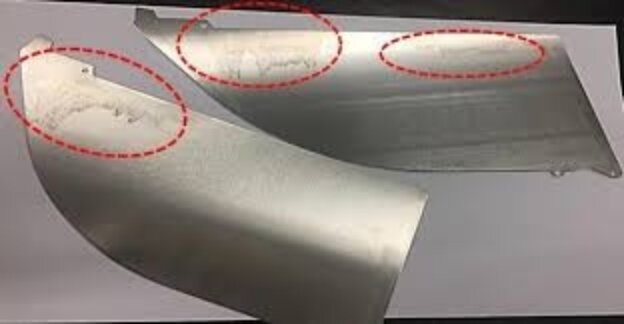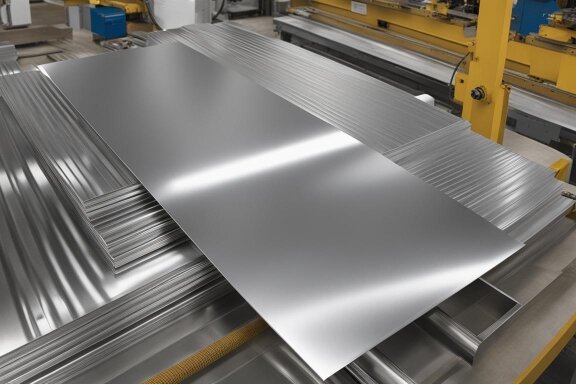يُعدّ طلاء الألومنيوم بأكسيد الألومنيوم طريقة ممتازة لإضافة المتانة والجاذبية الجمالية لمنتجاتك. ومع ذلك، قد يكون الحصول على اللون المؤكسد المناسب أمرًا صعبًا. إذا لم يكن اللون كما هو متوقع، فقد يؤثر ذلك على شكل ووظائف مشروعك. يمكن أن تؤثر العديد من العوامل على اللون النهائي، مثل نوع السبيكة وعملية الطلاء بأكسيد الألومنيوم واختيار الصبغة. وقد يؤدي ذلك إلى عدم اتساق اللون، وفي النهاية إلى عدم الرضا.
هل تريد إتقان العلم وراء تلوين الألومنيوم المؤكسد؟ دعنا نستكشف الجوانب التقنية التي تحدد مطابقة الألوان الناجحة والخطوات العملية لتنفيذها.
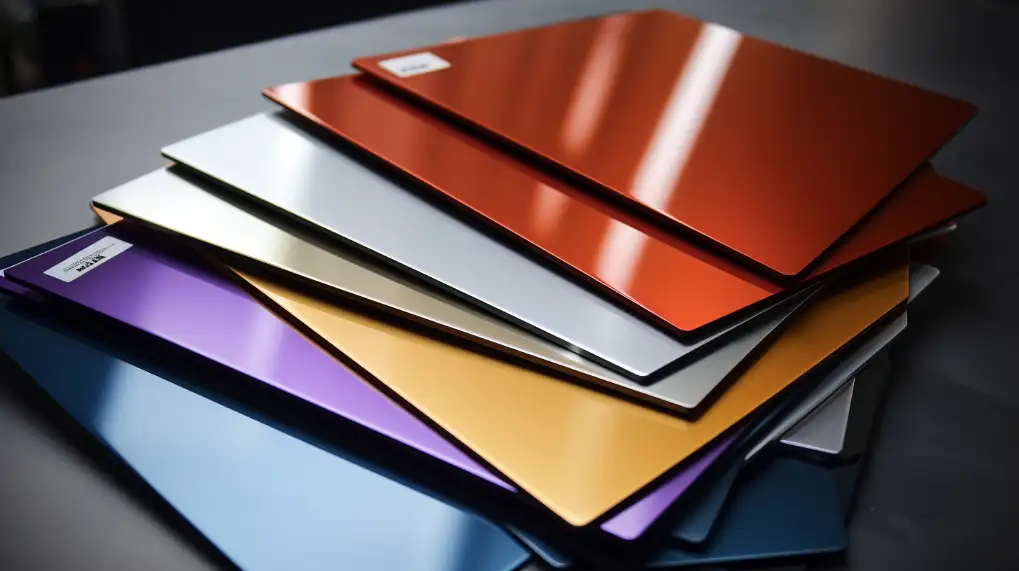
ما هو الأنودة وكيف تؤثر على الألومنيوم
أنودة هي عملية كهروكيميائية تخلق طبقة أكسيد سميكة على سطح الألومنيوم. تحسّن هذه الطبقة مقاومة التآكل والتآكل وتسمح بتخصيص اللون. يتميز الألومنيوم المؤكسد بالمتانة، وتتكامل طبقة الأكسيد مع المعدن، مما يجعله مقاومًا للتقشير والتقشر والبهتان.
أثناء عملية الطلاء بأكسيد الألومنيوم، يتم غمر الألومنيوم في حمام إلكتروليت. يتم تمرير تيار كهربائي عبر المحلول، مما يؤدي إلى اندماج الأكسجين مع الألومنيوم. تشكل هذه العملية طبقة أكسيد أكثر سمكاً. تكون الطبقة مسامية، مما يسمح للأصباغ باختراق السطح والالتصاق به.
عملية أنودة الألومنيوم
تتضمن عملية طلاء الألومنيوم بأكسيد الألومنيوم عدة خطوات مهمة لضمان الحصول على ألومنيوم متين ومقاوم للتآكل وممتع من الناحية الجمالية ينهي. فيما يلي تفصيل للمراحل الرئيسية في عملية الأنودة.
الخطوة 1: التنظيف
الخطوة الأولى هي تنظيف سطح الألومنيوم جيدًا. فأي أوساخ أو شحوم أو ملوثات يمكن أن تتداخل مع عملية الأنودة.
الخطوة 2: الحفر
يزيل النقش طبقة رقيقة من الألومنيوم لإضفاء لمسة نهائية ناعمة غير لامعة. تزيل هذه الخطوة الشوائب الطفيفة وتهيئ السطح للأنودة.
الخطوة 3: إزالة الطمس الحمضي
بعد الحفر، قد تبقى طبقة من البقع (البقايا) على السطح. تزيل عملية إزالة التلطيخ بالأحماض هذه البقايا، مما يضمن نظافة الألومنيوم بشكل مثالي وجاهز للأنودة.
الخطوة 4: الطلاء بأكسيد الألمنيوم
أثناء خطوة الطلاء بأكسيد الألومنيوم، يتم غمر سبيكة الألومنيوم في حمام من حمض الكبريتيك، الذي يعمل بمثابة إلكتروليت. ثم يتم تمرير تيار مباشر عالي الجهد عبر المحلول، مما يحول سطح الألومنيوم إلى أكسيد الألومنيوم، والمعروف أيضًا باسم الطبقة الأنودية.
الخطوة 5: التلوين
وبمجرد طلائه بأكسيد الألومنيوم، يمكن للسطح المسامي امتصاص الأصباغ. يتم وضع الصبغة، ويتشربها الألومنيوم ويتشربها الألومنيوم ليحصل على اللون المطلوب. تعتمد كثافة اللون على تركيز الصبغة ووقت الغمر.
الخطوة 6: الختم
الخطوة الأخيرة هي إحكام إغلاق السطح لتثبيت اللون وتعزيز المتانة. يغلق الختم المسام، مما يجعل السطح مقاومًا للتآكل والتآكل والبهتان.
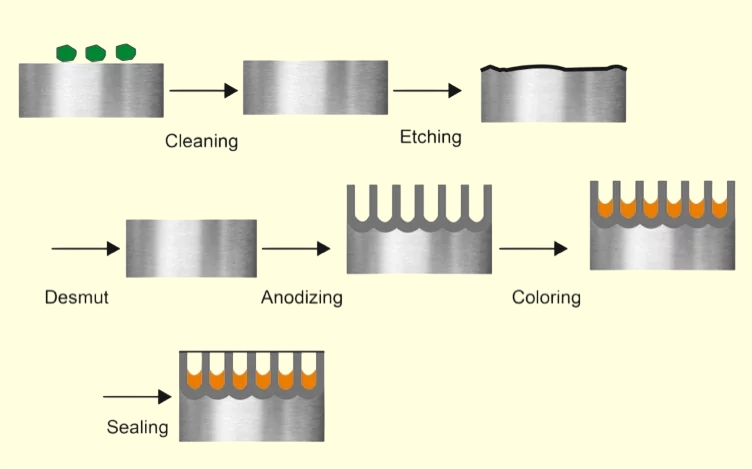
لماذا تختار ألوان الألومنيوم المؤكسد؟
يوفر الألومنيوم المؤكسد أكثر من مجرد مظهر جمالي؛ فهو يجمع بين الجمال والوظائف والمتانة. فيما يلي بعض الأسباب الرئيسية لاختيار ألوان الألومنيوم المؤكسد لمشاريعك.
إرضاء جمالي
يوفّر الألومنيوم المؤكسد ألواناً نابضة بالحياة وقابلة للتخصيص تعزز مظهر منتجاتك. يتم دمج اللون في سطح المعدن، مما يوفر لمسة نهائية ثابتة ودائمة.
قوية ومتينة
تُنشئ عملية الطلاء بأكسيد الألومنيوم سطحًا صلبًا مقاومًا للتآكل يقاوم الخدوش والتآكل والتعرض للأشعة فوق البنفسجية. وهذا يجعل الألومنيوم المؤكسد مثالي للاستخدامات الداخلية والخارجية على حد سواء.
الفوائد الوظيفية
بالإضافة إلى المظهر الجمالي، يوفر الألومنيوم المؤكسد مزايا وظيفية. حيث تعمل طبقة الأكسيد على تحسين العزل الكهربائي والثبات الحراري والالتصاق بالطلاء أو المواد اللاصقة، مما يجعله خياراً عملياً للبيئات الصعبة.
صديق للبيئة
الأنودة عملية صديقة للبيئة. فهي تستخدم مواد غير سامة وتنتج الحد الأدنى من النفايات. كما أن متانة الألومنيوم المؤكسد تقلل من الحاجة إلى الاستبدال المتكرر، مما يساهم في الاستدامة.
أنواع ألوان الألومنيوم المؤكسد
يتم تصنيف الألومنيوم المؤكسد إلى أنواع مختلفة بناءً على عملية الأنودة المستخدمة والخصائص الناتجة. وفيما يلي تفصيل لكل نوع:
النوع I - أنودة حمض الكروميك
تستخدم عملية أنودة حمض الكروميك الحمضية، والمعروفة أيضًا باسم الأنودة من النوع الأول، حمض الكروميك لإنشاء طبقة رقيقة من الأكسيد على سطح الألومنيوم. وينتج عن هذه العملية سماكة طلاء تصل إلى 0.0001 بوصة، مما يكسبها لقب أنودة "النوع الخفيف".
تعمل هذه العملية عن طريق تمرير التيار عبر الإلكتروليت، مما يتسبب في طرد الجسيمات الموجبة من الأنود. وهذا يخلق أخاديد مجهرية على سطح الألومنيوم، والتي تتأكسد بعد ذلك لتكوين طبقة أنودية واقية. توفر هذه الطبقة الرقيقة مقاومة ممتازة للحرارة والتآكل.
النوع الثاني - أنودة حمض الكبريتيك
تستخدم عملية الأنودة من النوع الثاني حمض الكبريتيك بدلاً من حمض الكروميك مما ينتج عنه طبقة أكسيد أكثر سمكاً. تتراوح طبقة الأكسيد الناتجة عن أنودة حمض الكبريتيك من 0.0002 إلى 0.001 بوصة.
تنطوي العملية على أخاديد مجهرية أعمق تتشكل على سطح الألومنيوم، مما يعزز من سماكة طبقة الأكسيد. تُعد هذه الطلاءات الأكثر سماكة مثالية لامتصاص الصبغة وتوفر احتفاظاً أفضل بالألوان مقارنةً بالأنودة من النوع الأول.
النوع III - الطلاء بأكسيد الألومنيوم الصلب
الطلاء بأكسيد الألومنيوم الصلب، أو الأنودة من النوع الثالث، هو شكل أكثر تقدماً من أنودة حمض الكبريتيك. في هذه العملية، تكون طبقة الأكسيد المتكونة على الألومنيوم أكثر سمكًا - عادةً ما تكون أكبر من 0.001 بوصة - مما يؤدي إلى الحصول على طبقة نهائية متينة للغاية.
كما تسمح هذه العملية بامتصاص الصبغة بشكل ممتاز، مما يجعلها مناسبة لتخصيص الألوان. وعلى الرغم من أنها توفر خيارات ألوان أقل، إلا أن اللمسة النهائية قوية للغاية وتدوم طويلاً.
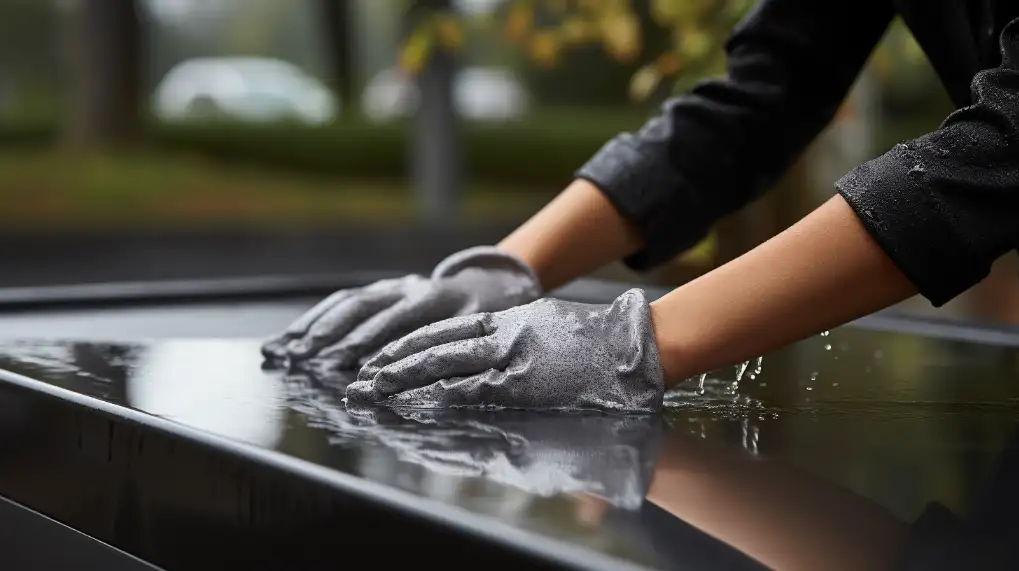
مطابقة الألوان في أنودة الألومنيوم
تضمن مطابقة الألوان في عملية أنودة الألومنيوم أن المنتج النهائي يلبي متطلبات التصميم المحددة ويحافظ على الاتساق بين الدفعات. إليك كيفية تحقيق مطابقة دقيقة للألوان:
توحيد صيغ الصبغة الموحدة
استخدم تركيبات صبغة دقيقة وحافظ على تركيزات صبغة متسقة. حتى الاختلافات الطفيفة يمكن أن تؤدي إلى اختلافات لونية ملحوظة.
بارامترات عملية التحكم
راقب عوامل مثل وقت الأنودة والجهد ودرجة الحرارة. تؤثر هذه المتغيرات بشكل مباشر على سُمك طبقة الأكسيد ومساميتها، مما يؤثر على امتصاص الصبغة.
استخدام معايير الألوان
حدد الدرجة اللونية المطلوبة باستخدام مخططات الألوان الموحدة أو رموز بانتون. يوفر ذلك هدفًا واضحًا لمطابقة الألوان.
الاختبار والضبط
قم بتشغيل دفعات اختبار صغيرة قبل الإنتاج الكامل. قارن النتائج بمعيار اللون واضبط العملية حسب الحاجة.
الفحص تحت إضاءة متناسقة
قم بتقييم الألوان تحت ظروف إضاءة مضبوطة لتجنب التباينات الناتجة عن مصادر الإضاءة المختلفة.
التطبيقات الشائعة للألومنيوم المؤكسد الملون
يجمع الألومنيوم المؤكسد الملون بين المتانة والألوان النابضة بالحياة التي تدوم طويلاً، مما يجعله خياراً مثالياً لمجموعة كبيرة من الصناعات.
الاستخدامات المعمارية والمباني
يستخدم الألومنيوم المؤكسد الملون على نطاق واسع في الهندسة المعمارية للواجهات وإطارات النوافذ والأسقف. كما أن متانته ومقاومته للعوامل الجوية وجاذبيته الجمالية تجعله الخيار الأفضل لتصميمات المباني الحديثة.
صناعات السيارات والفضاء الجوي
في صناعة السيارات والفضاء، يوفر الألومنيوم المؤكسد مكونات خفيفة الوزن ومقاومة للتآكل مع لمسة نهائية أنيقة. ويُستخدم في الزخارف والألواح والأجزاء الهيكلية، حيث يجمع بين الأداء الوظيفي والجاذبية البصرية.
الالكترونيات والسلع الاستهلاكية
يشيع استخدام الألومنيوم المؤكسد في الإلكترونيات للأغلفة والمشتتات الحرارية والموصلات. كما أن قدرته على تبديد الحرارة ومقاومة التآكل وتقديم ألوان قابلة للتخصيص تجعله مثاليًا للهواتف الذكية وأجهزة الكمبيوتر المحمولة وغيرها من الأدوات.
المجوهرات وأدوات الزينة
إن الألوان النابضة بالحياة والطبيعة الخفيفة للألومنيوم المؤكسد تجعله مفضلاً للمجوهرات والساعات وقطع الديكور. كما يُستخدم أيضاً في قطع الديكور المنزلي مثل المصابيح وقطع الأثاث.
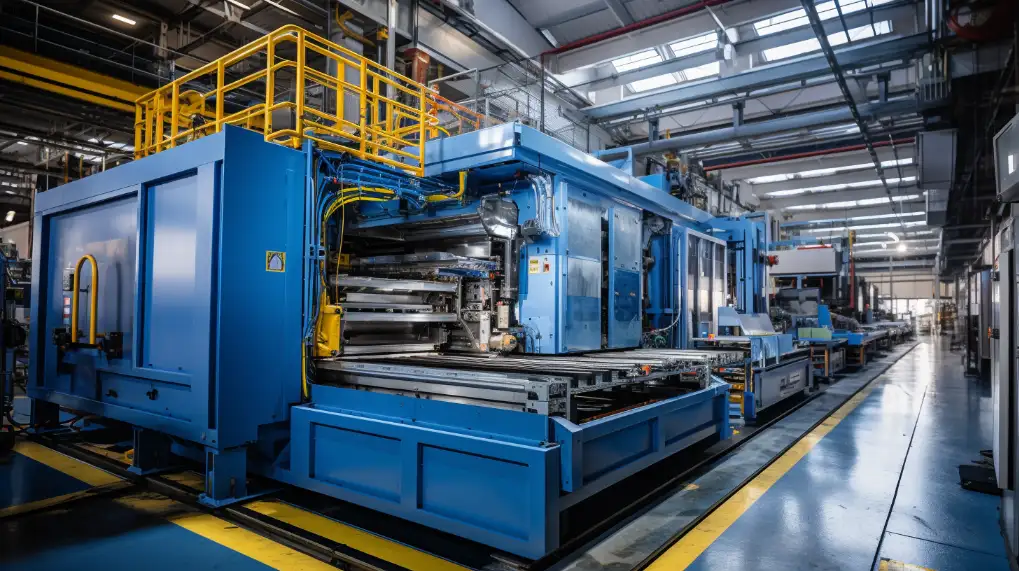
العوامل المؤثرة على لون الألومنيوم المؤكسد
إن الحصول على لون متناسق في الألومنيوم المؤكسد ليس بالأمر السهل دائماً، حيث يمكن أن تؤثر عدة عوامل على النتيجة.
عملية الأنودة وتباين الألوان
تلعب عملية الأنودة نفسها دورًا مهمًا في نتائج اللون. تؤثر عوامل مثل تركيز الإلكتروليت والجهد ووقت الغمر على سُمك طبقة الأكسيد ومساميتها. تمتص الطبقة الأكثر سمكًا المزيد من الصبغة، مما يؤدي إلى ألوان أعمق، في حين أن الاختلافات في معلمات العملية يمكن أن تؤدي إلى تناقضات.
كيف تؤثر تركيبة السبيكة على نتائج الألوان
يؤثر نوع سبائك الألومنيوم المستخدمة على اللون النهائي. فقد تنتج السبائك التي تحتوي على نسبة عالية من السيليكون أو النحاس درجات لونية داكنة أو غير متساوية. يميل الألومنيوم النقي أو السبائك ذات التركيبات المتناسقة إلى إنتاج ألوان أكثر اتساقاً وتناسقاً.
دور الصبغة في الأنودة
الصبغة المستخدمة أمر بالغ الأهمية لتحقيق اللون المطلوب. تُصنع الأصباغ المختلفة لدرجات لون محددة، ويجب التحكم في تركيزها بعناية. تضمن الصبغات عالية الجودة ألوانًا نابضة بالحياة تدوم طويلاً، بينما يمكن أن تؤدي الصبغات ذات الجودة الرديئة إلى نتائج باهتة أو غير متطابقة.
خاتمة
الألومنيوم المؤكسد الملون هو مادة متعددة الاستخدامات توفر المتانة والجاذبية الجمالية. فهو يوفر مجموعة واسعة من الفوائد في مختلف الصناعات، من الهندسة المعمارية إلى السيارات والإلكترونيات والمجوهرات. وبفضل مقاومته للتآكل، وخيارات الألوان النابضة بالحياة واللمسات النهائية التي تدوم طويلاً، لا يزال الألومنيوم المؤكسد خيارًا شائعًا للمصممين والمصنعين الذين يبحثون عن الأناقة والأداء.
هل أنت مهتم باستكشاف كيف يمكن للألومنيوم المؤكسد أن يرتقي بمشروعك القادم؟ اتصل بنا اليوم لمزيد من المعلومات!
الأسئلة الشائعة
كيف يمكنك إزالة اللون من الجزء المؤكسد إذا لم يكن مطابقاً؟
لإزالة اللون من القطعة المؤكسدة، يمكنك نزع الطبقة المؤكسدة باستخدام محلول كيميائي مثل هيدروكسيد الصوديوم (الصودا الكاوية). تعمل هذه العملية على إذابة طبقة الأكسيد، مما يسمح لك بإعادة تأكسد وصبغ الجزء للحصول على اللون المطلوب.
ما هو اللون الذي يمكن أن يكون بأكسيد الألومنيوم؟
يمكن طلاء الألومنيوم بأكسيد الألومنيوم بمجموعة كبيرة من الألوان، بما في ذلك الأسود والذهبي والأحمر والأزرق والأخضر وغيرها. تعتمد خيارات الألوان على الصبغة المستخدمة وعملية الطلاء بأكسيد الألومنيوم. يمكن أيضًا الحصول على ألوان مخصصة من خلال مزج الأصباغ.
هل يبهت الألومنيوم المؤكسد؟
يتميز الألومنيوم المؤكسد بمقاومته العالية للبهتان، خاصةً عندما يكون محكم الإغلاق بشكل صحيح. ومع ذلك، فإن التعرض الطويل للأشعة فوق البنفسجية القاسية أو المواد الكيميائية يمكن أن يسبب بعض البهتان مع مرور الوقت. تقلل الأصباغ عالية الجودة وتقنيات الإغلاق من هذا الخطر.
هل أنودة الألومنيوم فعالة لمقاومة التآكل؟
نعم، تعمل عملية الطلاء بأكسيد الألومنيوم على تحسين مقاومة الألومنيوم للتآكل بشكل كبير. تعمل طبقة الأكسيد كحاجز يحمي المعدن من الرطوبة والمواد الكيميائية والعوامل البيئية.
مهلا، أنا كيفن لي

على مدى السنوات العشر الماضية، كنت منغمسًا في أشكال مختلفة من تصنيع الصفائح المعدنية، وشاركت رؤى رائعة هنا من تجاربي عبر ورش العمل المتنوعة.
ابقى على تواصل

كيفن لي
لدي أكثر من عشر سنوات من الخبرة المهنية في تصنيع الصفائح المعدنية، وتخصصت في القطع بالليزر، والثني، واللحام، وتقنيات معالجة الأسطح. كمدير فني في شنغن، أنا ملتزم بحل تحديات التصنيع المعقدة ودفع الابتكار والجودة في كل مشروع.



